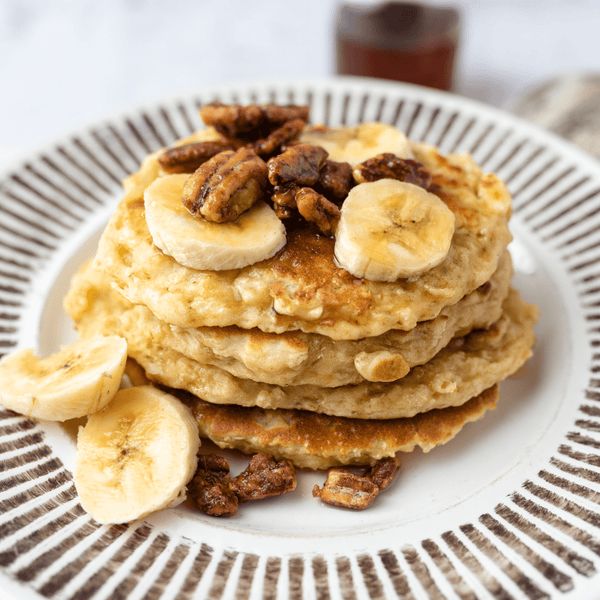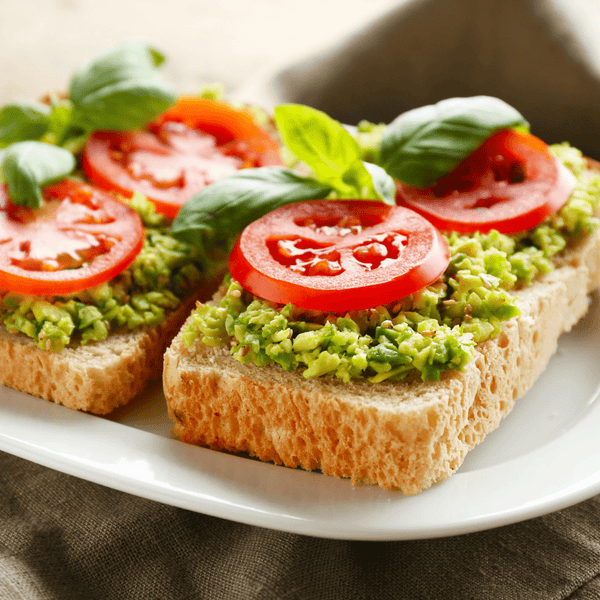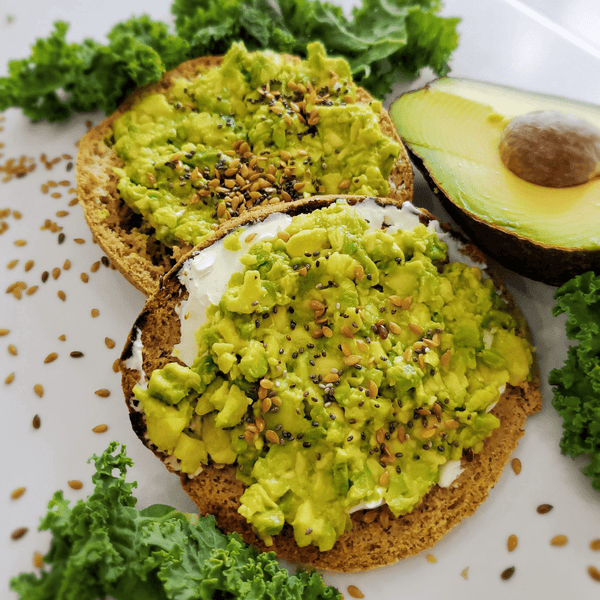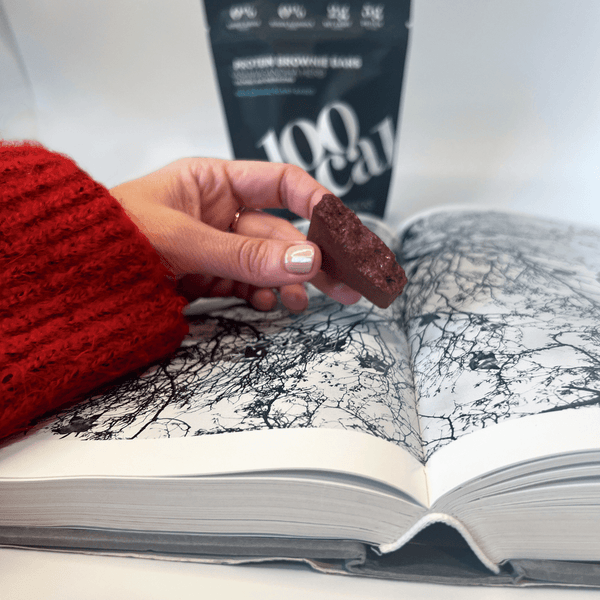If you’ve ever set a goal to lose a few pounds, build some muscle, or maybe even both at the same time, you’re definitely not alone.
It can feel tricky to figure out where to start, especially with so many options out there.
That’s where protein powder comes in. It can help you tone up, slim down, or just make your meals a little more filling. It is a super versatile tool that can help you reach your goals.
Sadly, a lot of people don’t know how to use it in a way that will help them reach their goals.
Lucky for you, that’s exactly what we’re here to talk about here!
Why Protein Matters for Weight Loss & Muscle Gain
When it comes to reaching your fitness goals, protein is a bit of a multitasker.
For muscle gain, it’s the building block your body uses to repair and grow stronger after a workout. Without enough protein, all that effort at the gym won’t pay off as much.
For weight loss, protein works behind the scenes to help you hold onto muscle while you lose fat, so you don’t end up feeling weak or tired as the number on the scale goes down.
Another bonus? Protein is super satisfying. Including it in your meals can help keep those random snack cravings at bay, making it easier to stick to your plan.
If you’re figuring out how to use protein powder for weight loss, think of it as a handy way to fill in the gaps, especially on busy days when cooking a full meal isn’t realistic.
It’s not about replacing real food, but about making your routine a little easier and more balanced.
Choosing the Right Protein Powder
With so many options on the shelf, choosing the right protein powder can feel a bit overwhelming.
The most common types of proteins are whey (fast-absorbing and great post-workout), casein (slower digesting, ideal before bed), and plant-based options like soy, pea, or hemp for anyone avoiding dairy.
Each type has its perks, so it often comes down to your preferences and dietary needs.
If you’re aiming for weight loss, especially as a woman, look for protein powders that are low in added sugar and made with simple, clean ingredients.
Fewer additives and a short ingredient list are usually a good sign. For anyone with sensitivities, plant-based powders can be gentler on the stomach.
And don’t forget to check for third-party testing for extra peace of mind.
When it comes to how to use protein powder for weight loss, it’s really about finding a powder that fits your lifestyle and goals, something you’ll actually enjoy using in your daily routine.
How to Use Protein Powder for Weight Loss
Adding protein powder to your routine can be a simple and effective way to support weight loss, without making things feel restrictive or boring. Here’s how to use protein powder for weight loss in a way that actually fits your lifestyle:
Start with Breakfast
Swapping your usual breakfast for a protein shake is an easy win, especially if mornings are busy.
A scoop of protein powder (usually about 20–25g protein) blended with water or milk keeps you full and helps you avoid mid-morning snack attacks.
You can also stir protein powder into oatmeal or yogurt for a more filling start to your day.
Meal Replacement or Snack
Protein shakes can double as a quick meal replacement when you’re short on time or as a satisfying snack between meals.
Just keep an eye on portion size and calories, most powders work best with one scoop per serving, and you’ll want to choose a powder that’s low in added sugar and unnecessary fillers.
For women specifically, picking a protein powder with fewer than 150 calories per serving and minimal sugar helps keep your calorie count in check while still feeling satisfied.
Post-Workout Recovery
Drinking a protein shake after exercise can help your muscles recover and keep you from feeling ravenous later on.
If you’re wondering how to use protein powder for weight loss, this is a great time to fit it in, especially if you’re active and want to maintain lean muscle as you lose weight.
Get Creative
Protein powder isn’t just for shakes. Try mixing it into smoothie bowls, pancake or waffle batter, homemade energy balls, or even baked goods for a protein boost.
You can also add a scoop to dips, spreads, or even your morning coffee for a little extra staying power.
Portion Control & Calorie Awareness
Remember, protein powder is a tool, not a magic bullet.
Stick to one serving at a time, and always check the label for calories, protein content, and added sugars.
If you’re asking, “What should I look for in a protein powder if I’m trying to lose weight?”, go for options with simple, clean ingredients, high protein per serving, and low sugar.
Tips for Women
Women may need slightly more protein during weight loss to help preserve muscle mass.
Aim for 1.0–1.6 grams of protein per kilogram of body weight, and don’t be afraid to experiment with plant-based or lactose-free options if you have dietary sensitivities.
In the end, how to use protein powder for weight loss is all about finding what works for you. It could be anything: a morning shake, a post-workout boost, or a creative snack.
Pair your protein powder with whole foods, plenty of veggies, and regular movement for the best results.
How to Use Protein Powder for Muscle Gain
Building muscle isn’t just about lifting weights, it’s also about giving your body the right fuel, and protein powder can be a super handy tool for that.
If you’re wondering how to use protein powder for muscle gain, it really comes down to two things: getting enough protein each day and pairing it with consistent resistance training.
Timing
You might hear a lot about the “anabolic window”, the idea that you need to drink your protein shake right after your workout.
The truth? Research shows it doesn’t really matter if you have your shake before or after exercise; what counts most is your total daily protein intake.
Some people like a shake 20–30 minutes before a workout for a little energy boost, while others prefer it after to help with recovery. Choose what feels best for you.
Daily Protein Targets
To really see muscle gains, aim for about 1.6–2.2 grams of protein per kilogram of body weight each day (that’s roughly 0.7–1 gram per pound).
For example, if you weigh 70 kg (about 154 lbs), you’d want between 112 and 154 grams of protein daily. You can use a protein calculator to get a more personalized number.
How to Calculate Your Protein Needs
Convert your weight from pounds to kilograms (divide by 2.2).
Multiply your weight in kg by 1.6 (for the lower end) and 2.2 (for the higher end) to get your daily protein range.
Combining with Resistance Training
Protein powder works best when you’re also doing regular strength or resistance training.
The combo of lifting and protein helps your muscles repair and grow stronger after each session.
Try to spread your protein intake across 3–4 meals or snacks each day, rather than loading up all at once. This keeps your muscles supplied with what they need to grow.
Practical Tips
- Add a scoop of protein powder to your breakfast smoothie or oatmeal.
- Use it in a post-workout shake with fruit and nut butter.
- Mix it into yogurt or pancake batter for a protein boost.
Bottom Line
How to use protein powder for muscle gain is all about consistency, regular training, enough daily protein, and spreading your intake throughout the day.
Find a routine that fits your schedule, and remember: protein powder is a tool to help you reach your goals, not a magic shortcut.
Tips & Common Mistakes
It’s easy to get the most out of protein powder with a few simple habits. First, balance is key, use protein powder as a supplement, not a replacement for whole foods.
Whole foods offer extra nutrients and keep your meals interesting. Stick to the recommended serving size (usually 1–2 scoops) and pay attention to your total protein needs, so you’re not overdoing or underdoing it.
Too much protein can lead to digestive issues like bloating or cramping, while too little might mean you’re not seeing the results you want.
Stay hydrated, especially if you’re upping your protein, since your body needs water to process it well.
Try to mix up your protein sources, add shakes to smoothies, oatmeal, or snacks, but don’t rely on them for every meal. The biggest mistake?
Thinking more is always better or skipping out on whole foods. Keep things balanced, listen to your body, and you’ll get the best of both worlds.
The 100 Cal Snacks Difference: Protein-Powered Snacking
Finding smart, protein-rich snacks can make sticking to your goals so much easier, whether you’re aiming to lose weight, build muscle, or just keep your energy up.
That’s where 100 Cal Snacks come in.
Our Chocolate Protein Bars, BBQ Protein Puffs, and Peanut-Butter Protein Bars are all designed with real protein, sensible portion sizes, and just 100 calories per pack.
They’re perfect for tossing in your bag, keeping at your desk, or grabbing after a workout. Each snack helps you stay satisfied and on track, without the guesswork or extra calories.
Plus, they’re vegan, high in fiber, and also keto friendly!
If you’re looking for a convenient way to boost your protein, without overthinking it, check out our full collection and see how easy it can be to support your weight loss or muscle gain journey.
Remember, protein powder is a helpful tool, but it’s the small, consistent changes that really add up. Adding a protein-powered snack to your day is a simple step toward feeling stronger and more energized.
Why not start today with a 100 Cal Snacks favorite?
